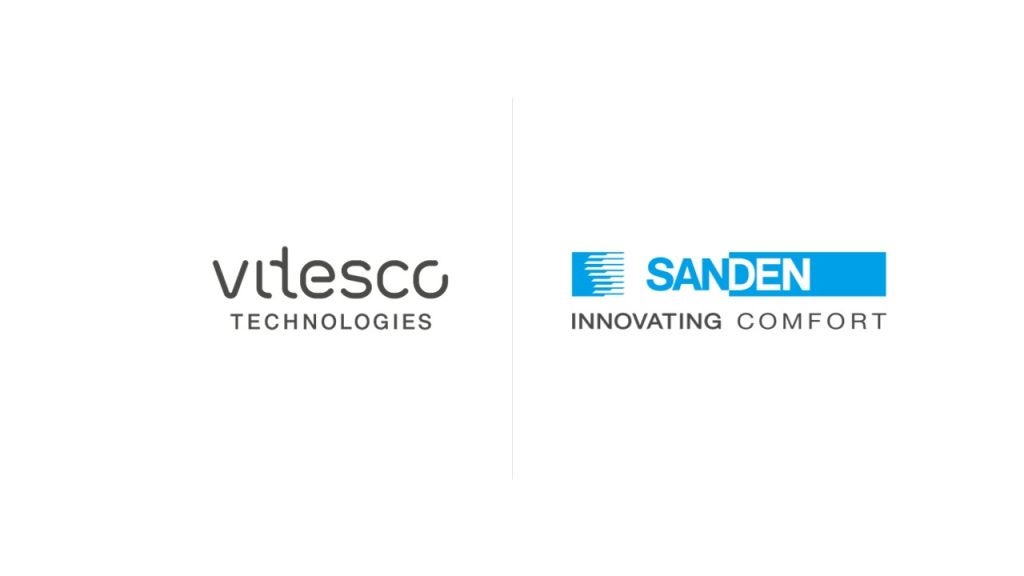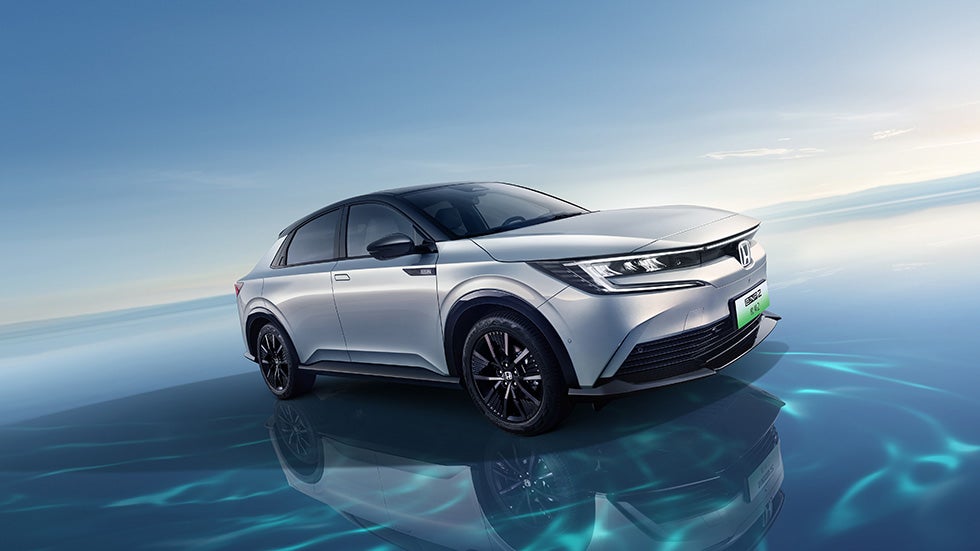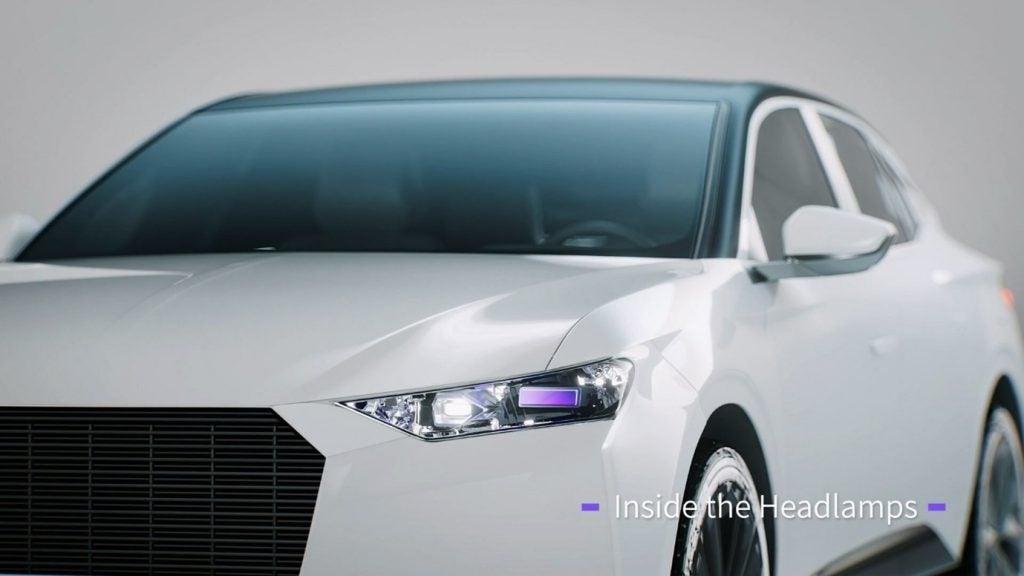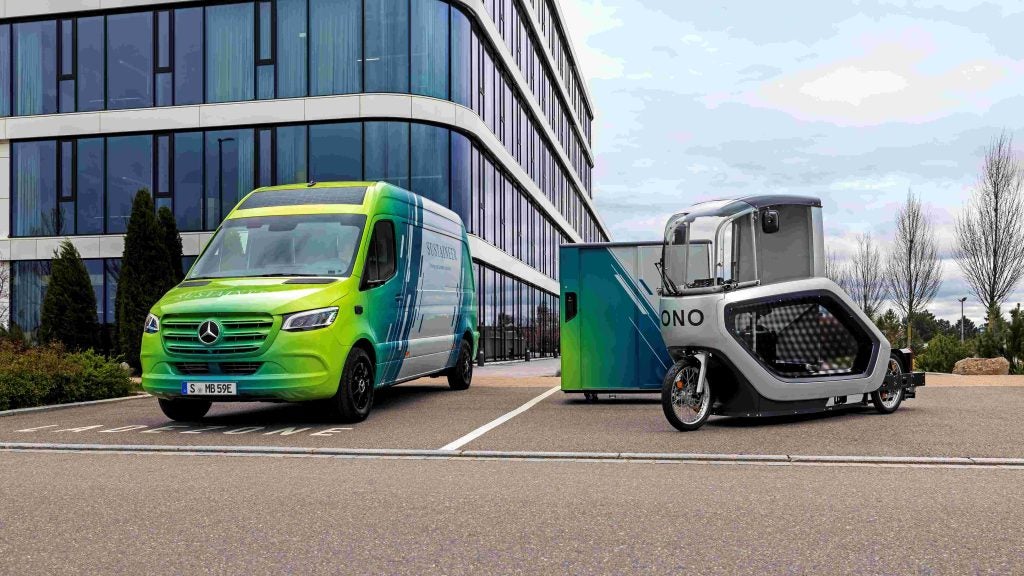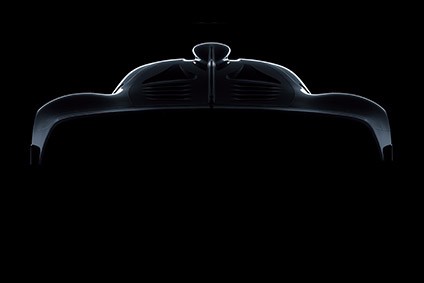
A lot has changed since the last Frankfurt IAA cars show took place two years ago. Opel and Vauxhall have been spun off from the GM empire making Groupe PSA Europe’s second largest OEM by regional sales volume. And while diesels are increasingly seen as ‘dirty’, there is a certain irony that the first engines for the future Euro 6.2 emissions standard are now being announced.
Sales-wise, the German market remains strong, registrations rising to their highest level in eight years during August. Discounting is, however, rife, and in other big regional markets such as the UK, ever larger incentives are needed to attract buyers. Premium-priced brands are selling up a storm across Europe as Audi, BMW, Mercedes-Benz and others keep pushing into the traditional territory of what had once been the mass market, with the result being a lot of pain for the likes of Peugeot, Citroen, Vauxhall, Opel, Ford and Fiat.
Frankfurt will give the German makes the chance to shine even more brightly, as they introduce certain key new models. The VW Polo and T-Roc as well as the BMW X2 and X3 come immediately to mind. And what of industry trends? The first signs of A segment crossovers being a potential new segment are appearing, the number of EVs and PHEVs continues to expand and the ongoing fashion for crossovers and SUVs shows no sign of doing anything other than expanding.
Polo – the star of the show?
The car might have already been shown to the press but there is no doubting the importance of the eighth generation Polo and its motor show debut in front of a home market audience will be a major event for Volkswagen. The outgoing model is still selling well and it’s easy to see the new car expanding VW’s share of the B segment.
The new model uses the same MQB A0 (Zero) architecture as the similarly sized SEAT Ibiza. The five-door hatchback is now longer than four metres, measuring 4,053mm with width coming in at 1751mm height being 1446mm. All of that makes it 81mm longer, 63mm wider and 7mm lower than its predecessor. The boot’s capacity is expanded by 71 litres and is quoted as being able to hold 351 litres.
How well do you really know your competitors?
Access the most comprehensive Company Profiles on the market, powered by GlobalData. Save hours of research. Gain competitive edge.

Thank you!
Your download email will arrive shortly
Not ready to buy yet? Download a free sample
We are confident about the unique quality of our Company Profiles. However, we want you to make the most beneficial decision for your business, so we offer a free sample that you can download by submitting the below form
By GlobalDataThe other new model for Volkswagen is the T-Roc, the brand’s long overdue challenger for the Nissan Qashqai. At 4,234mm long, it’s close in size to the Golf and sits below the Tiguan and above the yet to be seen T-Cross, a B-SUV. This should probably appear at the Geneva show next March.
Returning to the T-Roc, this will be a global model, although VW of America says it won’t be offering it, at least not in the immediate future. FAW Volkswagen is understood to have been chosen as the JV which will build this model in China, as most other Volkswagen SUVs built there are made by SAIC Volkswagen. The European production location for the is Palmela (Setúbal) in Portugal.
VW wants to keep reminding us of its commitment to putting electric vehicles based on its MEB architecture into production and with that in mind, we will see an update of the I.D. Crozz concept. This prototype had its debut earlier in the year at the Shanghai motor show. The production model, a crossover, will be made in Germany (Zwickau-Mosel) and China (TBC) from 2020.
Audi, the Volkswagen Group’s next largest mass market brand, is showing signs of having a relatively quiet IAA by its own standards, though there could well be a surprise or three. New generations of the A7 and S7 are yet to be confirmed as debuts but these cars are said to be headed to Frankfurt alongside the official public premiere of the A8. No sign yet of a new S8 and there continue to be rumours about an RS 8. Other potential new models would include the next A1 and/or A6 although the second of these will likely be revealed first in China – possibly in extended wheelbase form at AutoGuangzhou in November.
The big news for SEAT, which is having a very good 2017 indeed (strong in its home market, France and Germany, and recently overtaking Citroen in the UK) is the Arona, its second SUV. This will enter soon enter production at Martorell ahead of the Europe-wide roll out to dealerships which commences in November.
There is another SEAT crossover-SUV to come and this one is yet to have its name revealed. Volkswagen will build it at Wolfsburg on the same line as the Tiguan and Tiguan Allspace. Speaking at the media preview of the Ateca in June 2017, SEAT president Luca de Meo told journalists that he does not see the brand moving into the size territory above the future D segment SUV. The Volkswagen Group may of course change these instructions for its Spanish division in the coming years, depending on market trends and SEAT’s own profitability.
At the time of writing, no world debuts for Škoda had been announced. One possibility would be a potential Kodiaq Coupé but this might be held over for AutoGuangzhou or Geneva 2018.
Of the Volkswagen Group’s smaller brands, Bentley will be showing BY624, the next Continental GT. This will of course in due course be joined by BY625, a successor for the GTC. The convertible may not be seen until the LA show in November. The first engine is a 635PS W12. A 4.0-litre biturbo V8 will follow and this should be the same engine as the unit which powers the Porsche Panamera Turbo. Unlike the W12-engined variant, this one should be available in RWD form as well as AWD.
The third generation of what is surely Porsche‘s most important model, the Cayenne, is about to be shown for the first time to the public. Does any other vehicle which wears the Porsche badge have as high a profit margin at this one? This is probably why the company chose to keep the look evolutionary, although there is no doubting that this is a fresh design when viewed from the rear. The decision not to make Cayenne 3 larger than the existing model also suggests there is at least the room for a long-wheelbase Executive body. Will such a vehicle be created as a rival for the L versions of the Range Rover? Probably we won’t know the answer to that question until next April, which is not only when the Cayenne is due to be in dealerships, but also probably when an Executive might be a world premiere at Auto China in Beijing.
You might think that Groupe PSA would be wanting to flex its newly expanded brand muscles but you’d be wrong. The Peugeot brand won’t even be at the show, which seems an odd decision to have taken. Still, the company is having to watch every cent due to the embattled state of its Peugeot, Citroen and DS divisions not only in China, where the decline is steep and ongoing, but in many European countries too.
Citroën will reveal the replacement for the C3 Picasso at the show. This, the C3 Aircross, is the twin of the only fractionally older Opel/Vauxhall Crossland X. As for the Peugeot 2008 with which it will compete, the littlest Aircross lacks a 4×4 system; not that that will necessarily lose it many sales. Citroën really needs this model to be a success, as the brand has been caught out with too few crossovers or SUVs. C3 registrations are starting to rise dramatically in France at least so the worst may now be over for the double-chevron brand. Not so for DS, which not only lacks SUVs but also any kind of image thanks to brand awareness which must surely rank even lower than Infiniti among Europeans. Groupe PSA is probably just being realistic by not bothering to even have a stand for DS at the IAA.
If things aren’t going well for the number two European OEM in the region’s number one market with its French brands, then there is better news for Groupe PSA from Opel. The IAA marks the official world premiere for the Grandland X. This SUV will be the longer term successor to the Zafira after that MPV fades away in a year or two’s time. Its real purpose is to establish the Opel and Vauxhall names in the C-SUV segment in a way that the long-deceased Antara never could.
Another first at the show for Opel is its 154kW (210PS) bi-turbo diesel which is able to meet the EC’s Euro 6.2 amendment norms now, ahead of these becoming a legal requirement as of 2018. This will probably be the engine which will power a sports-diesel version of the Insignia GSi. Only the petrol GSi has been officially announced but the details of the diesel will likely be publicised on the first media preview day.
Ford of Europe may yet spring a concept car surprise but aside from an updated 1.5-litre diesel engine for the EcoSport, there is more or less nothing that’s a world debut from the brand. The Fiesta has been on sale for a while now, and the Focus has been delayed, so it’s set to be a quiet IAA for the American firm.
FoE’s similarly sized rival, Groupe Renault, will be debuting a new Duster for Dacia. The HJD series car will be manufactured or assembled in multiple countries, including, for the first time, Iran. A longer version may be added towards the end of 2018. The car is the same size as the previous model and it uses that vehicle’s platform too.
The Renault brand itself will present an autonomous EV concept called Symbioz, as well as the Mégane R.S., while the Alaskan will be seen by many people at the show for the first time.
Daimler is looking at a potential future generation of car sharing for smart in the form of the vision EQ fortwo concept. This also lends some much needed clarity to the confusion over what exactly EQ is. Not apparently, a sub-brand solely for Mercedes-Benz fully-electric models. And what may be the first of those will be previewed by the Mercedes-Benz Concept EQA, or Concept EQ A – the US division was the first to announce this prototype and its media material disagrees with the mothership’s. The same of course applies to existing model names such as S 560 and S560. At least this is an improvement on the pre-facelift S 500 and S550. These were the same car but the US importer badged it differently.
Another premiere for Mercedes-Benz will be the GLC F-CELL EQ Power, which is a bit of a mouthful. The word is, Daimler will build a limited run of this hydrogen-powered GLC-Class from 2018. Other debuts include facelifts for the S-Class Coupé and Cabriolet as well as equivalent updates for the Mercedes-AMG variants of both. There might also be a new generation G-Class at the show, though some sources are reporting that this has now been put back by a few months.
Daimler will be wishing that its Project ONE hypercar will steal the show in terms of fantasy models, the engine reportedly having links to a Formula 1. Fewer than 275 cars will be made, with production set to commence in September 2018. The range on electricity will be around 30km and the car will run on ordinary 98 octane unleaded. The top speed will be in excess of 218mph, Mercedes-AMG claims.
BMW Group, another of the mass manufacturers – can we really think of the German Big Three as makers of premium models anymore? – will have a lot of new models and prototypes on its stand. F90, the new M5, is distinguished by being the first in this long-running model series to have four-wheel drive and its 441kW (600 horsepower) matches that of the 40 Jahre Edition of the old shape car. At 750Nm, however, torque output rises by 50Nm compared to the previous fastest M5.
The new 6 Series Gran Turismo will be another world debut. This huge hatchback replaces the unloved 5 Series GT.
As for higher volume models, we know all about the facelifted i3 already as well as the heavier but faster i3S, the new X3 makes its motor show debut and there will be a production version of the smaller X2 which was first seen as a prototype at the Paris Mondiale de l’Automobile one year ago.
Yet another SUV for what will soon be the largest BMW manufacturing plant in the world – Spartanburg – will be premiering at the IAA too. It won’t be in production just yet, the example at the show being a prototype preview of the X7, which will be BMW’s largest SUV yet when it goes into production in just over a year’s time. The first variants will reportedly be badged as follows: xDrive50d, xDrive40i and xDrive50i according to an inside source.
A new Rolls-Royce is a rare thing and a fresh Phantom rarer still, so it will be quite something for show-goers to see the latest model. Shown to the media in July, this giant sedan is the other motor show debut for BMW Group. An adaptation of its spaceframe architecture will underpin RR31, the brand’s first SUV, next year.
Hyundai isn’t expected to reveal any major new models at Frankfurt but like many rival brands, the Korean firm is looking for ways to lift margins. With that in mind, it is revealing a fastback version of the i30 as well as the N variant. The latter is the first for what is planned to be an eventual new sub-brand. Think of it as Hyundai’s equivalent to Volkswagen’s GTI.
Kia is thinking along the same lines as its major shareholder by showing a design study which gives certain clues to how next year’s replacement for the pro_cee’d will look. The apostrophes and lower case first letters which confused some are also set to vanish in the interests of simplification: cee’d becomes Ceed and pro_cee’d will likely evolve into Proceed.
The next generation Ceed and its derivatives, which are collectively codenamed BD, are due for a global roll-out from 2018. The replacement for the Forte and Cerato is also part of this project.
A couple of other Kias will also be premiering at the IAA. This includes the X-Line version of the Picanto, which is Kia trying to see if Europeans might be interested in an A segment crossover. A mid-cycle update for the Sorento will have its motor show debut (it’s been on sale in South Korea for a couple of months now) and while we’ve known about the Stonic for some time, this is also its show premiere. Surprisingly, there are no official plans to manufacture this B-SUV in Europe but that may well happen at a later date.
Toyota is set to highlight the success of the C-HR via a concept called Hy-Power. Details of what exactly this will be were scarce at the time of writing, along with any details of just how ‘new’ the brand’s other world premiere, a Land Cruiser (Prado), will be. It does sound as if the latter will be another facelift for what is now an eight-year old model. That likely means that the successor to this body-on-frame 4×4 has been delayed until 2020. And speaking of elderly Toyotas, there is still no news on how or even if Toyota Motor Europe intends to replace the Avensis sedan and estate. What might take its place at the Burnaston plant in England? An SUV would make more sense.
Honda will have more novelties than its larger Japanese rival at the IAA, with the world debut of an electric vehicle prototype taking place. The production model is due out next year but the big question is where will it be built?
We know that the CR-V Hybrid, which is a regional premiere (its debut was in China earlier in 2017), will be imported to Europe from Japan rather than being made in England and the same applies to other versions of this SUV. One surprise is the decision not to offer a diesel in this model. Instead, when the CR-V finally reaches Europe, it will be powered by a 1.5-litre turbo petrol engine, as well as the petrol-electric alternative. For those who wonder what impact this will have on Honda’s engine plant west of London, the new-ish 1.6-litre diesel continues to be made there, and it will be fitted to the Swindon-built Civic from 2018.
For the moment, there has been no news from Land Rover of any world premieres at the show. It wouldn’t be a surprise, however, if a facelift for the Range Rover appeared. It might also gain the Ingenium diesel engine, which is available in the Range Rover Sport, and potentially the petrol version too, which isn’t. An SVR version of the Velar could be another debut.
As for Jaguar, this will be the first motor show appearance for the E-PACE, which Magna Steyr will commence build of in 2018. The 2018 model year XJ range will also be displayed, including the XJR575.
There is quite a list of makes which are choosing to give Frankfurt a miss, for their own various reasons. Among these are Fiat, Abarth, Alfa Romeo and Jeep but not Ferrari, which will reveal the Portofino; Nissan and Infiniti; the Peugeot and DS brands as stated above; Mitsubishi; and Volvo. As a small counter-measure, Chery Auto will be present and revealing an SUV prototype with the model code of M31T. This is to be SUV and it may even end up being sold in Europe and the USA if the firm’s plans stay as intended.
The final model to be listed in this preview has perhaps the best brand name of any vehicle making its debut in Frankfurt: Thunder Power. We won’t know the prototype’s model name until the media day but this Chinese start up wants to be, yes…you guessed it….the next Tesla.
A list of world premieres can be found here.
Future vehicles intelligence
Additional data on vehicle lifetime and future product plans, such as code names, production plants and expected annual build, are available in PLDB from QUBE.
An overview of the 2017 Frankfurt IAA Cars motor show will be the subject of the second and final part of this management briefing. It will be published shortly after the show’s media preview days.



